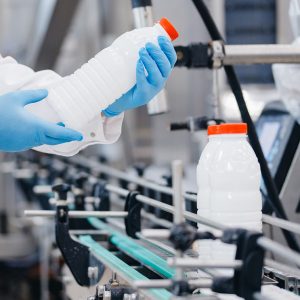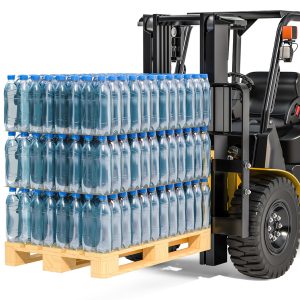The Three Stages of Labeling and Printing on Packaging
Primary, Secondary and Tertiary Packaging
Every production and manufacturing process varies to meet an organization’s needs, goals, regulations, and more. However, all organizations that produce a product have something in common- the packaging of those products. There are three stages of product packaging where labeling or printing take place.
The three stages of packaging are:
- Primary Packaging – At this stage a product is put into its container.
- Secondary Packaging – At this stage products are put into branded or retail boxes as well as boxes for shipping.
- Tertiary Packaging – The third and final stage is the palletizing stage, where boxes are put onto a wooden pallet, wrapped with plastic or strapped down for loading onto a truck for shipping.
Packaging Stage 1 – Primary Packaging

At the production or manufacturing stage of a product (or the filling and sealing stage) a product is placed into a package or container. Two things are often needed at this stage- label application directly onto the product container and the printing of variable data. Variable data refers to information like expiration dates, barcodes, product ID number, etc.
Printers utilized for this stage will depend on the volume, speed and quality needed by the manufacturer. Larger, continuous operations will often utilize continuous inkjet printers (CIJ), which provide low resolution code at uninterrupted high-speeds. Companies who have more intermittent needs, will often use a thermal inkjet (TIJ) printer. There are more factors that go into choosing the right industrial printer, so make sure to understand your needs and goals by speaking to a marking and coding expert.
Packaging Stage 2 – Secondary Packaging
 Once a product container is labeled and marked, the individual products are combined into secondary packaging. Sometimes a manufacturer will utilize a branded or retail-ready box at this phase. Multiple secondary packages are often placed into a larger box for the distribution and shipping stage.
Once a product container is labeled and marked, the individual products are combined into secondary packaging. Sometimes a manufacturer will utilize a branded or retail-ready box at this phase. Multiple secondary packages are often placed into a larger box for the distribution and shipping stage.
It is common practice that secondary packaging requires a barcode or lot code printed with an industrial printer. The distribution and shipping package often requires a label to be printed and applied. Some companies directly print or mark on the package with a large character case coder when there are not strict contrast regulations dictating label use.
Large character case coders are high resolution and allow for variable data to be printed accurately in addition to printing pristine logos and graphics. Large character usually refers to between 2 inches and 4 inches in height, commonly with black ink.
Packaging Stage 3 – Tertiary Packaging
 The final packaging stage is palletizing the shipping and distribution boxes. These are often shrink wrapped or tied with nylon straps to pallets. It is critical that the pallets are labeled to meet regulations in a safe and efficient manner. Many large companies, like Walmart, provide pallet labeling and coding requirements that must be followed.
The final packaging stage is palletizing the shipping and distribution boxes. These are often shrink wrapped or tied with nylon straps to pallets. It is critical that the pallets are labeled to meet regulations in a safe and efficient manner. Many large companies, like Walmart, provide pallet labeling and coding requirements that must be followed.
Pallet labelers must be durable, safe, and easy to use and maintain with a modular design. A quality print engine that prints with high contrast, clearly displaying data and codes, is critical at this stage.
Do you need guidance on printing and labeling during the packaging stages?
AMI proudly has a team of experts with decades of experience in helping organizations find the right solutions to fit their needs, processes and budget. Get in touch with a team member today.

